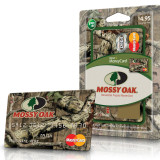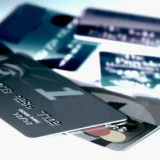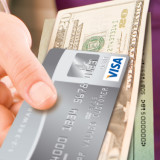Contrary to popular belief, prepaid debit cards are for everyone
By Shane Tripcony
Sometimes it takes a deep dive into the world of facts to dislodge a stubborn misperception. That’s exactly what happened in 2012 when a study by the Pew Charitable Trusts reached the startling conclusion that some people fare better using prepaid debit cards than checking accounts. Pew’s finding was enough of a bombshell that it spawned a surge in media coverage of the prepaid debit card boom.
To be clear, the Pew report was not a love letter to the prepaid debit card industry. It sharply criticized the industry for lack of transparency, and it pointed out the pitfalls (especially a profusion of fees) that an unwary customer can encounter. It called for greater federal regulation of prepaid debit card issuers. But the buzz created by the report finally helped dispel the old stereotype of the average card user. It’s now an accepted fact that prepaid debit cards attract many mainstream consumers.
Prepaid cards were long considered financial instruments of last resort. People who used them had the reputation of being “underbanked,” with checkered financial histories that made them unable to qualify for bank accounts or credit cards. While that may have been true in the past, three developments have changed this profile.
First, many ordinary consumers have become aware of what’s good about prepaid debit cards. Second, some consumers have learned how to pick the right card and use it wisely. Third, greater competition and advertising in the prepaid debit card industry have lured more customers who simply want something new.
Frustration with the old ways
Looking at recent history, it’s not hard to see trends that may have nudged people toward alternative financial products. Since the Great Recession, public faith in banks has declined. Consumers know that while bank accounts and credit lines offer numerous perks, their overdraft fees, overly generous credit limits and interest rates can push a person into a deeper hole during hard times.
And Americans’ fears about the erosion of their privacy have been growing right along with revelations of government monitoring and corporate mishandling of consumer information. It’s not just a question of email and phone records being collected and stored somewhere beyond their control. People want to know who has their financial information and what is being done with it.
For consumers with such concerns — and their ranks are increasing — prepaid debit cards have a natural appeal. These cards are designed to provide a certain amount of autonomy to the user, for better or worse.
Making purchases with a card that’s not directly tied to a bank leaves the consumer in control of his or her own finances. No third party will step in with either punishment or assistance if the card runs out of money. Susan Weinstock, the chief researcher in the Pew study, cites feedback the organization received in its consumer forum from prepaid cardholders. “They liked the control,” she says. “They liked that you couldn’t overspend.”
While noting the fees that people have to consider when choosing a prepaid debit card, the Pew research also found that many prepaid customers seek out the cards in an effort to avoid hidden bank fees.
Weinstock’s description of people who want to be in financial control is the opposite of the old image of a prepaid debit card user – someone who is out of options and at the mercy of the marketplace. Today, getting a prepaid card is often a calculated decision, not an inescapable fate.
Nobody looking over your shoulder
As for the issue of privacy, Weinstock notes that many consumers find some measure of it in prepaid debit cards. “Perceived anonymity” is a major attraction of these cards, she says. A prepaid card is backed by cash, not by a bank or credit account that has the person’s information on file. Many people who use prepaid cards therefore feel less exposed.
Creating a “scientific” profile of the typical prepaid debit card user is difficult. The very privacy of these cards makes it hard to compile statistics. Even the Pew study did not offer sweeping pronouncements on this issue. It did, however, find that consumers fall into various categories. Some pick their cards carefully and use them to maximum advantage. But others are less careful in their choices and get less benefit, and some make poor choices and do poorly. Of course, broadly speaking, the same levels of success could be found among users of credit cards or checkbooks.
The future and you
What does all this mean for the consumer who hasn’t tried prepaid debit cards? First, if the only thing that’s holding you back is the notion that prepaid cards are some sort of financial black mark, then your thinking is out of date. Plenty of mainstream financial consumers are using them. But on the other hand, the worst reason to do anything is simply because other people are doing it. Consider what prepaid cards have to offer and make up your own mind.
The sheer volume of prepaid debit cards on offer is great, so you need to compare deals carefully. For her part, Pew’s Weinstock has this tip: Don’t get a prepaid debit card with overdraft protection. Weinstock says that one hallmark of successful card users is the embrace of the automatic financial discipline that comes when there is no overdraft protection. It’s just the sort of advice you would expect for a mainstream financial product.





